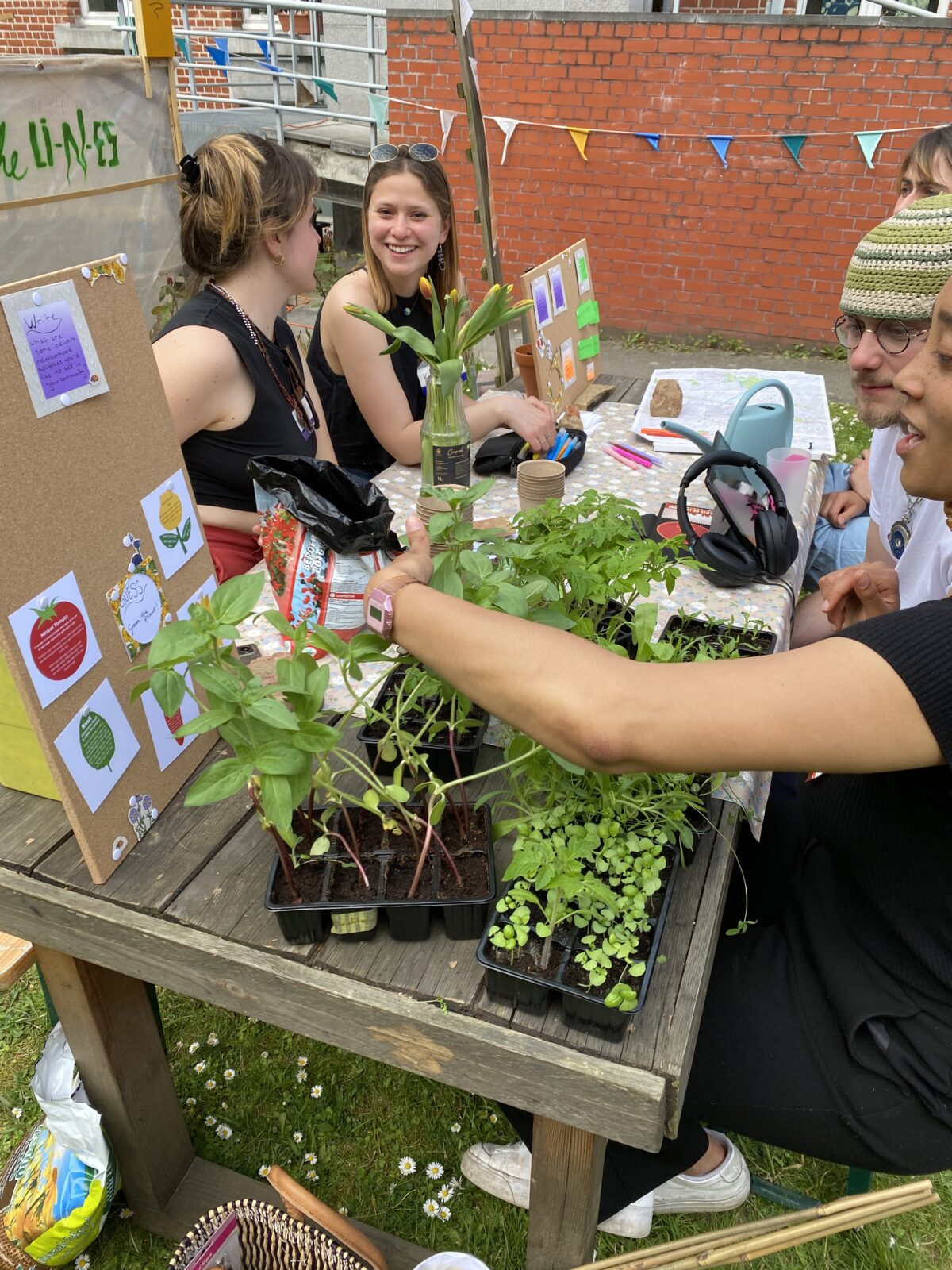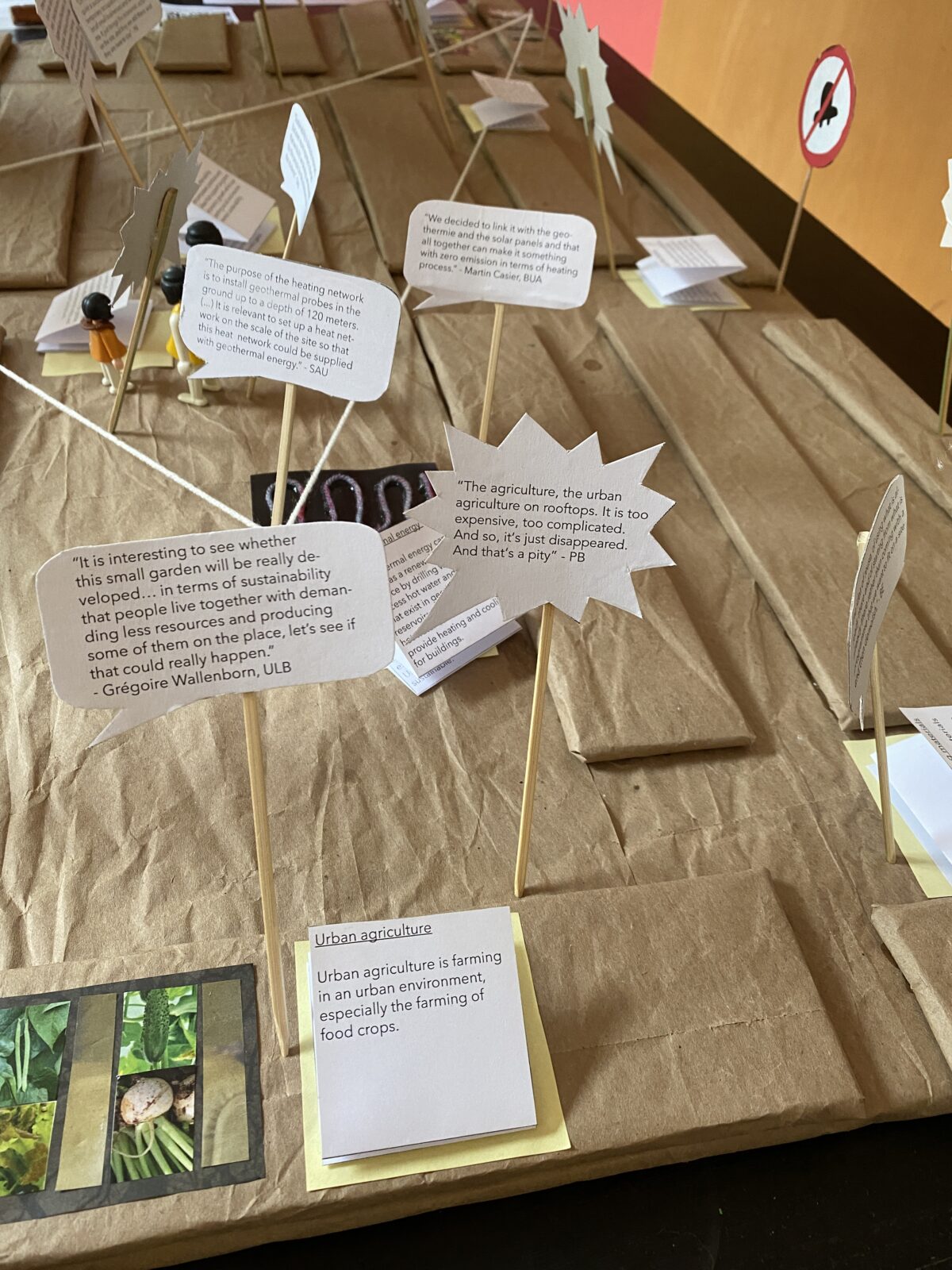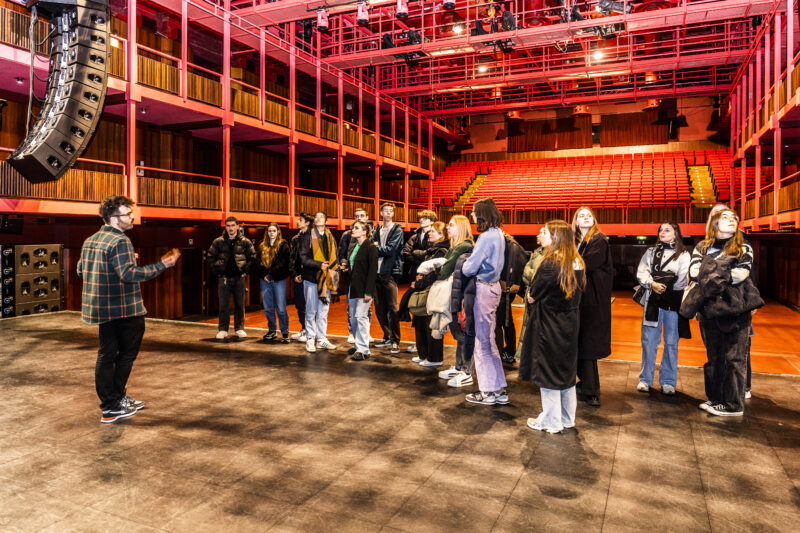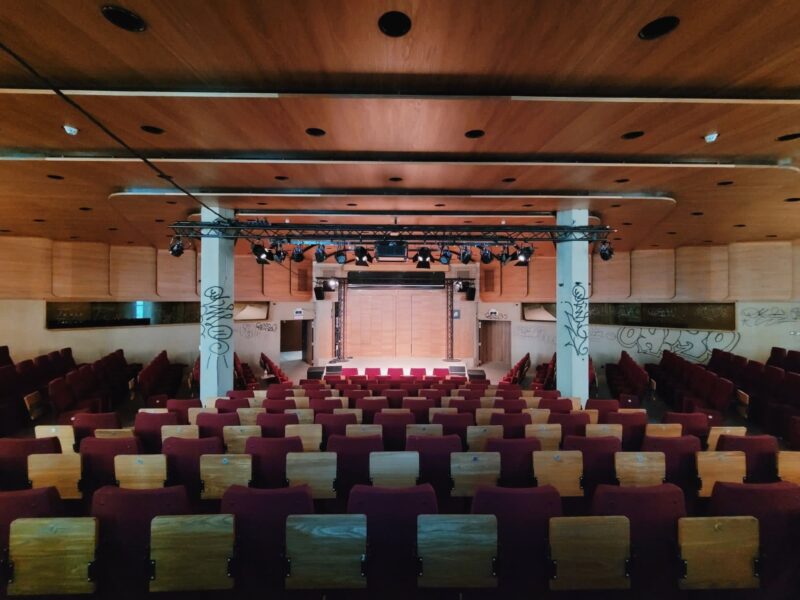USQUARE – YOUR SQUARE
The field of urban studies provides us with theories and concepts that help explain how cities function and evolve. However, it’s only through practical application that these ideas become tangible and relevant to our daily lives. This is where projects like “Usquare, Your Square” come in. The event was the closing moment of the VUB-ULB course named “Advanced Seminar in Urban Studies”. The course builds on three traditions: (1) critical pedagogy, (2) place-based education, (3) participatory action research, merging into a ‘critical pedagogy of place’. The aim is to further deepen student’s critical reflection and understanding of the socio-political and socio-ecological dynamics shaping the urban sphere.
This year’s edition of the course provided students with a chance to participate in an in-depth analysis of an urban renewal project: Usquare. This site, part of the former barracks in Ixelles (Brussels), has a long and complex history: originally erected at the beginning of the 20th century under impulse of King Leopold II as a school for police forces, it was acquired by two Brussels universities (ULB and VUB) a couple of years ago to reconvert into a new university campus and neighbourhood. After 4 years of temporary occupation by tens of socio-cultural organizations, renovation works have begun in December 2021. With their research project, the students participating in the course explored key stakeholders, ambitions, interests and dynamics characterizing this process. They presented their findings in four artefacts, and shared ideas concerning the future of the site.
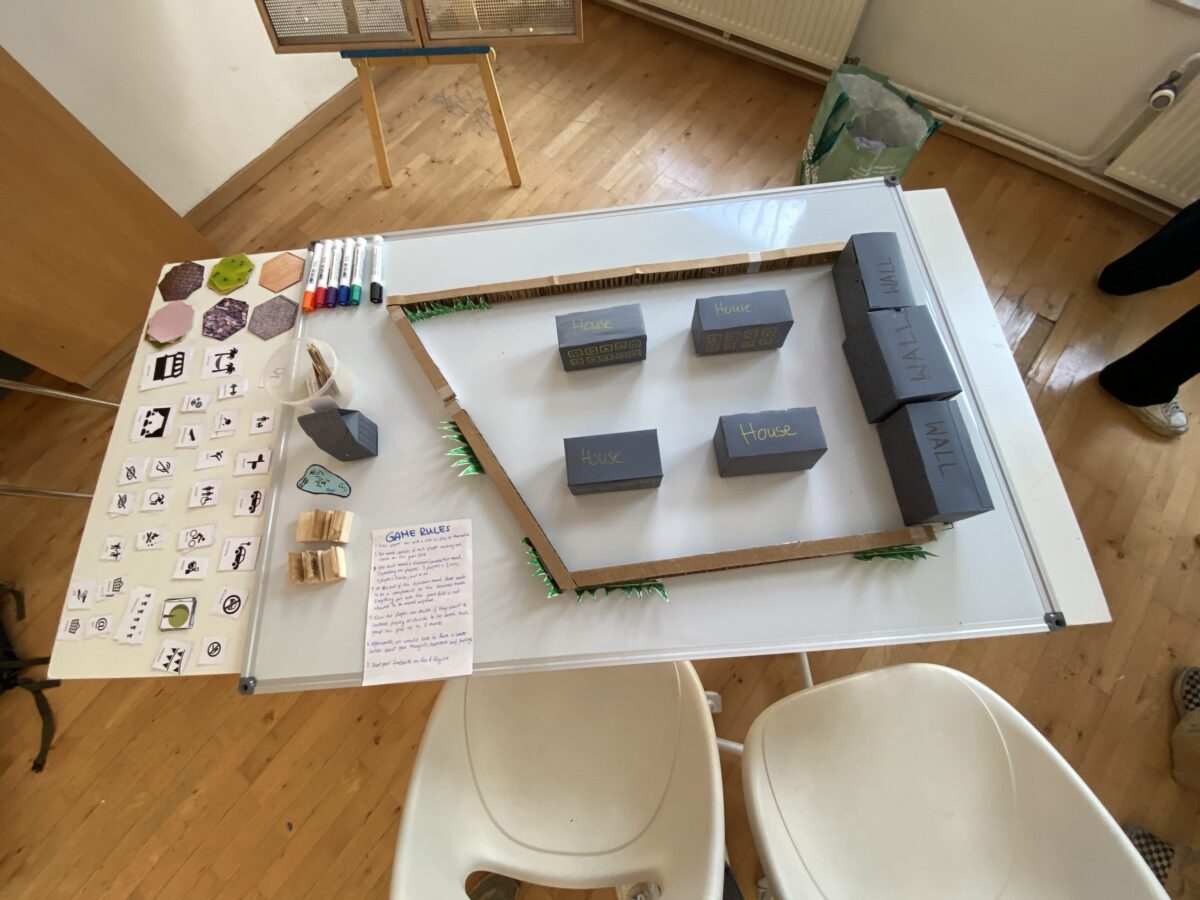
Participatory Planning
The Usquare site intends to serve multiple purposes. It aims to create an accessible space where diverse groups can come together. In order to grasp what facilities diverse publics might expect or need, students Kiona, Mattia, Irene, and Ronja designed a game building on a miniature model of the Usquare-site. Alongside the model were images of potential facilities, and markers were provided for players to write or draw on the model. The markers were erasable since the students had used a whiteboard as the surface for the model.
At the start of the game, each player had the option to draw a card with a character or to play as themselves. Each character had different needs and thus wanted certain facilities in Usquare. During each round, each player could make two choices, such as building a pond or making the toilets more accessible for wheelchair users.
After each round, a discussion among the players followed, where choices could be collectively revised. Once the final decisions were made, they could not be altered. After each round, players could decide whether to stop or play another round. A maximum of three rounds could be played per group. After the game, there was an opportunity to leave feedback on the chalkboard.
Breaking Down Barriers: The Story of the Wall Around the Old Barracks of Ixelles
The wall around the old barracks of Ixelles was originally built to prevent people from accessing the area. However, as time passed, the wall became more than just a barrier to keep people out. It created a barrier that prevented people from enjoying the space around the barracks.
Intrigued by the wall’s impact on the community, three students of the VUB, Charlotte, Laura, and Lucia, decided to investigate people’s opinions and feelings about the wall. They interviewed both people who knew the barracks as well as passengers who did not know the site at all.
The Effect of Walls: Perspectives
People who knew the barracks, had more positive feelings towards the wall. They felt that the wall brought a sense of security, as it protected the area from unwanted visitors. In contrast, people who did not know the barracks looked at the wall with negative feelings. They saw it as a barrier and felt intimidated by it. They did not know what was going on inside the walls, making the step to go inside greater.
An Innovating Approach: Encourage Dialogue
The students used this information to shape their artefact and came up with an innovative idea. They created a wall with cardboard boxes that mimicked the real wall, allowing visitors to interact with it and share their own input on how they would like to see the wall. The visitors were allowed to decorate the wall with post-its, write on the cardboard boxes, and stick pictures on them. A few boxes were even taken away to create light tunnels and open space.
Relationship between Walls and Public Spaces
The students’ project shed light on the complex relationship between walls and public spaces, showing that barriers can have both positive and negative effects on communities. Through their innovative artefact, they encouraged visitors to engage with the wall and share their thoughts, opening a dialogue that could lead to a more inclusive community.
USeed: Growing Community: The Power of Community Gardens in Creating Cohesive Communities
Community gardens have been gaining popularity in recent years, not just for their ability to produce fresh, healthy food, but also for their ability to bring people together and create a sense of community. Through a series of interviews with stakeholders, experts, and literature reviews, Kate, Francesca and Joan have discovered the many benefits of community gardens and how they can play a significant role in the transition to a more sustainable and cohesive community.
The Role of Community Gardens
Community gardens can play a significant role in creating a more sustainable and cohesive community. By bringing people together, fostering place attachment, and empowering communities, community gardens offer a multitude of benefits for individuals and the environment. Through the project, the students were able to simulate the workings of a community garden and provide visitors with an opportunity to design their own.
Benefits
Community gardens bring people together, bridging gaps across age, religion, ethnicity, and socioeconomic boundaries. They provide opportunities for place attachment, leadership, and decision-making activities, and foster the growth of collective identities. Community gardens empower communities, increase emotional connections and knowledge sharing, and offer environmental benefits, such as space for physical recreation and mental health benefits, like reduced stress and anxiety.
Inclusivity at the Heart of Useed
The starting point of the Useed project was the lack of clarity about the future of the Usquare garden. To address this, the focus was on inclusivity, ensuring that newcomers have an equal say in the garden. Potential linguistic barriers and cultural differences were also considered to avoid reproducing unequal social hierarchies. Garden activities were adapted to varying abilities, such as children or people with mobility issues. Mixed methods of communication should be engaged, including flyers and social media, to ensure inclusivity and participation.
Visitors’ experience
To bring these benefits to life, the students developed a simulation of a community garden for visitors. They allowed visitors to plant a seed or take home a plant to care for. Visitors also had the opportunity to construct their own community garden by sharing where they would like to see one and how they would design it on a notice board.
Mapping Sustainability: Perceptions in the Usquare
The students Frido, Lara, Ana-Lena, and Ida focused on the topic of sustainability, a term that is not well-defined and can be interpreted in many different ways. To tackle this issue, the group decided to interview various stakeholders involved in the renewal of the Usquare-site. All these stakeholders shared their interpretation and perception of sustainability. They also shared some challenges or missed opportunities related to sustainability on the Usquare site.
For their artefact, the students decided to create a mini model of Usquare and depict the perceptions and the challenges or missed opportunities in speech bubbles. The speech bubbles of the challenges or missed opportunities had a different shape. Here are some examples:
All visitors to the artefact were invited to self-reflect on what sustainability means to them. They could write down their perceptions on recycled paper and hang them above the mini model of Usquare.
Personal experience
Attending an educational event as visitors, we were pleasantly surprised by the transformative experience it offered. Our preconceived notions of a potentially dull affair were shattered as we witnessed the students’ ability to convey information in an engaging and fun manner. Through their remarkable efforts, they reshaped our understanding of inclusivity and sustainability, leaving an indelible impact on our minds.
Outside the event, we were greeted by a lively ambiance that added an extra layer of enjoyment. A talented DJ set the mood while we indulged in delicious snacks and refreshing drinks. The fusion of intellectual stimulation and a vibrant atmosphere made the event truly unforgettable.
An article written by Julie Simoens and Rani Vermeulen. Download their original report here.

